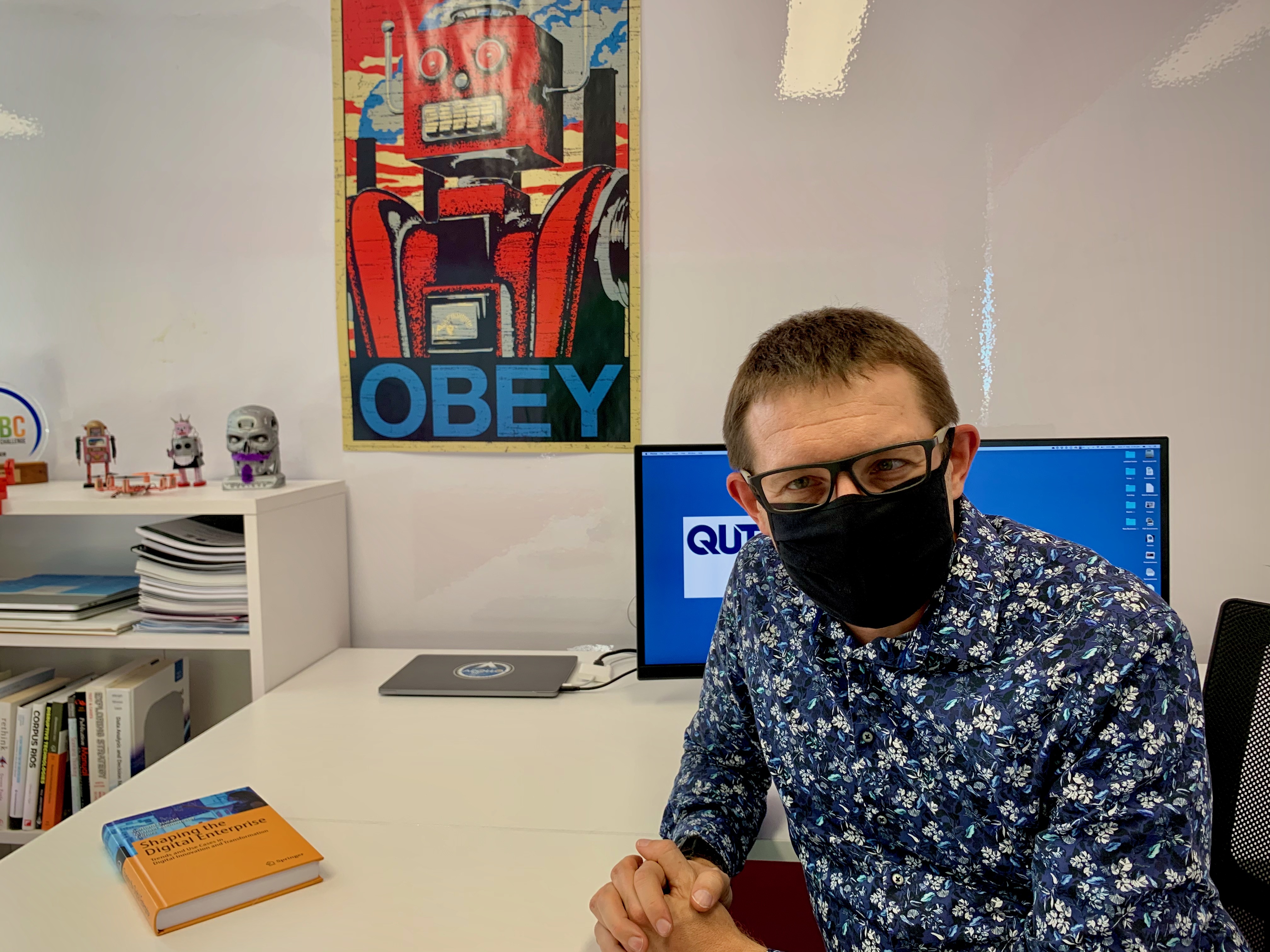
An army of cyber-workers is available for hire 24/7 to help ensure consumers can get what they want, when they want it and where to get it.
Professor Marek Kowalkiewicz is a leader in unlocking and understanding the massive changes to workplaces and emerging digital trends and is the Founding Director of QUT’s Centre for the Digital Economy.
“Just like you can hire humans to queue in stores and shop you can now hire algorithms to do this,” Professor Kowalkiewicz said.

“Those who are more digitally savvy stand a much better chance of benefitting from creating their own algorithms to run on their own servers,” he said.
Professor Kowalkiewicz said he hired an algorithm to visit a leading clothing manufacturer’s website.
Every five minutes it would check the site to alert him as soon as the ‘sorry, sold out’ embedded message disappeared from the product page selling cotton face masks.
“Bonds didn’t make it easy for me as I couldn’t simply look for changes in the text of the page, so I had to hire an algorithm that could analyse images and let me know when the message disappeared from the photo,” he said.
“When Bonds restocked with four million face masks for sale, eight of them landed in my shopping cart within five minutes.”

Professor Kowalkiewicz (pictured right) said he was taught an important lesson through his experience in using automated software buying, as the algorithm failed to pick up Bonds added a new product page with 3-packs of the masks.
“I missed an opportunity to save about $20,” he said.
“Not a big deal when buying a few masks but potentially a big deal when automating a purchase of a few hundred masks.
“When we trust automation too much and assume it’ll make the right choices for us, we might be missing out on opportunities that we failed to consider when automating our tasks.”
He has also pinpointed a new shift in shopping experiences with many businesses yet to realise the potential involved in connecting customers through algorithms.
It is known as B2A2C or Business-to-Algorithm-to-Consumer transactions, where the algorithm quasi becomes the customer and the human is in a supervising role.
“If you ever bought a flight ticket on a price comparison site, it’s almost certain it was a B2A2C transaction,” he said.
Professor Kowalkiewicz said recent research describing “the algorithmic customer” was detailed at the 11th SERVSIG conference held online in July.
“We identified nine classes of algorithms, known as software buying agents and grouped them along task complexity and task automation dimensions,” he said.
“We still have a long way to go when it comes to the growth in B2A2C as just one in 20 users of smart assistants use them for shopping.”
He said the emergence of algorithms that act on our behalf will create many opportunities.
“Manufacturers will need to learn how to build devices that order products and services on behalf of humans, retailers will need to learn to sell to algorithms, and customers will need to learn to work with algorithms,” he said.
Professor Kowalkiewicz was a panelist at the AFR Future Briefing on “Connected Customers” on Tuesday September 29, 2020.








